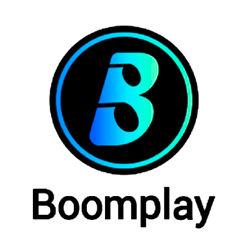Bridging the Gap: Insights & Innovations in Construction

Join the innovation adventure that spotlights MEP and the construction industry – advancements in technology, distinctive perspectives, the soft skills required for successful digital transformation, and stories about the problem-solving mindset that continues to shape this great industry and propel it forward. The Bridging the Gap Podcast gives voice to the incredible things happening in and around construction while championing the fact that this is a great industry to be in. The host, Todd Weyandt, seeks out enlightening conversations with industry experts who are changing the technological landscape. Engaging a full spectrum of voices, he champions an industry dialogue that supports companies as they try new things, advance and thrive. He is on a mission to embrace and share the innovations transforming the AEC, MEP and manufacturing industries. The Bridging the Gap Podcast is brought to you by Applied Software. With solutions for the modern project, Applied is on a mission to transform industries by empowering clients and championing innovation with real-world expert consultants. Bringing you a comprehensive array of solutions for AEC, MEP and manufacturing, the experts of Applied have a singular focus – helping you achieve higher performance. Visit asti.com today.
Episodes
Episodes



Wednesday Nov 19, 2025
How Data, Curiosity & Culture Transform Construction
Wednesday Nov 19, 2025
Wednesday Nov 19, 2025
How do construction leaders make better decisions in a world overflowing with data?
Recorded live at Autodesk University 2025, this conversation with Frank Phillips and Ashley Grassano from the University of Florida explores how curiosity, culture, and clear communication help teams turn raw information into meaningful action.
Frank and Ashley share how the AEC industry can shift from reactive to proactive by embracing data literacy, asking better questions, and building trust between the field and the office. From forecasting risks to creating visibility across teams, this episode highlights how decision-making improves when people, process, and technology finally align.
In this episode you’ll learn:
Why curiosity (not dashboards) is the real driver of innovation
How data transparency builds trust across construction teams
Practical steps for improving decision-making in fast-paced environments
MEET OUR GUESTS
Frank Phillips is Director of Business Affairs Technical Services at University of Florida, where he has over two decades of career experience.
Ashely Grassano is Space & GIS Manager at the University of Florida. She manages a team of BIM Coordinators, Space Planners, and GIS Administrators.
TODD TAKES
Make Old Buildings Smarter, Not “Smart”
A campus-wide push toward digital twins is turning legacy facilities into data-ready assets. The playbook: uplift Revit to a consistent minimum spec, link key MEP assets for location and maintenance, stream live data into Tandem, and anchor everything with GIS. It’s practical, phased modernization—form meets function.
Data Is an Asset—Treat It Like One
Ownership and flow matter. From ACC adoption to Cost rollout, success comes from redefining processes (not lift-and-shift), onboarding project-by-project, and measuring wins by outcomes (like contractors getting paid). The ethos: the owner funds the work, the owner owns the data—and partners help operationalize it.
Scan, Map, Connect—and Then Automate
LiDAR for utilities and interiors, geospatially aligned campus models, ACC + Tandem integration, and emerging AI/API upgrades (including easier auth) are building a true “smart campus” foundation. Pair top-down sponsorship with bottom-up field buy-in, and you get faster finds at 2 a.m., fewer “unknowns,” and clearer ROI.
MORE RESOURCES
Thanks for listening! Please be sure to leave a rating and/or review and follow up our social accounts.
Bridging the Gap Website
Bridging the Gap LinkedIn
Bridging the Gap Instagram
Bridging the Gap YouTube
Todd’s LinkedIn
Thank you to our sponsors!
Graitec North America
Graitec North America LinkedIn
Autodesk’s Website
Other Relevant Links: Frank’s LinkedInAshley’s LinkedInUniversity of Florida



Thursday Nov 13, 2025
Building Smarter: How to Scale Innovation Across Construction Teams
Thursday Nov 13, 2025
Thursday Nov 13, 2025
What does it take to scale construction innovation without losing the human touch?Recorded live at Autodesk University 2025, this conversation with Jason Waddell, Director of Construction Technology at Batson-Cook Construction, dives into how one of the Southeast’s leading builders is bridging the gap between field and office through connected technology, culture, and collaboration.
Jason shares insights on implementing new workflows, training teams on emerging tools, and creating a culture where innovation sticks. From healthcare builds to cutting-edge VDC practices, learn how Batson-Cook is using data, AI, and collaboration to future-proof construction, one project at a time.
💡 You’ll learn:
How to implement tech adoption that actually lasts
The key to connecting innovation with real jobsite needs
Why human-centered leadership is the foundation for digital transformation
Practical steps for scaling VDC and data workflows
MEET OUR GUEST
Jason Waddell is Director of Construction Technology Development at Batson-Cook Construction. Jason has been an estimator for about 18 years and a BIM manager for about 12 years. He also has extensive IT experience, having worked as an IT Support Specialist for over 5 years.
TODD TAKES
Prefab Unlocks New Efficiencies
Prefabrication isn’t just a buzzword—it’s proving itself in real-world projects. By standardizing processes like vertical shafts and pods, teams are speeding up schedules, reducing waste, and creating more predictable outcomes. What once felt experimental is now becoming the expectation.
Change Management is the Hardest Innovation
Technology alone doesn’t drive transformation—people do. Rolling out new tools requires building trust, meeting teams where they are, and addressing their real pain points. The lesson here is that one-on-one conversations, training champions, and gradual adoption win the day over flashy rollouts.
AI and Robotics are Shaping the Next Horizon
Artificial intelligence and robotics aren’t replacing people—they’re freeing them. From automatically generating reports to exploring autonomous equipment, these technologies are about reducing repetitive tasks so skilled professionals can focus on higher-value work. The future is less about hype and more about practical applications that genuinely save time and boost safety.
MORE RESOURCES
Thanks for listening! Please be sure to leave a rating and/or review and follow up our social accounts.
Bridging the Gap Website
Bridging the Gap LinkedIn
Bridging the Gap Instagram
Bridging the Gap YouTube
Todd’s LinkedIn
Thank you to our sponsors!
Graitec North America
Graitec North America LinkedIn
Autodesk’s Website
Other Relevant Links: Jason’s LinkedInBatson-Cook Construction



Tuesday Nov 11, 2025
Beyond the Facade: AI, Sustainability & the Future of Design
Tuesday Nov 11, 2025
Tuesday Nov 11, 2025
Simon Whelan from FenestraPro returns to Bridging the Gap for another insightful conversation—this time live from Autodesk University! In this episode, Simon and Todd Weyandt dive into the evolving world of facade design, the critical role of sustainability in architecture, and how AI is transforming the design process.
Simon shares why early design decisions matter more than ever, clears up common misconceptions about facade analysis, and explores the delicate balance between aesthetics, cost, and performance. This episode is a must-listen for architects, designers, and innovators looking to stay ahead of the curve in a rapidly changing industry.
MEET OUR GUEST
Simon Whelan is Co-Founder and COO of FenestraPro. He has worked with global firms like AECOM, Gensler, and Jacobs to integrate real-time energy modeling and facade performance directly into their workflows, inside Autodesk Revit and Forma. With a background in architecture and environmental systems (MSc, LEED GA), he bridges the gap between design intent and performance outcomes.
TODD TAKES
Shift the envelope decisions left
Early-stage choices on glazing, shading, and orientation drive most of a building’s comfort, energy, and cost outcomes. With fast feedback loops in tools like Forma (and envelope extensions), teams can iterate on facades before documentation locks them in—letting designers be both creative and analytical where it matters most.
AI should remove drudgery, not replace design
The win isn’t “AI as auteur,” it’s automating the tedious stuff—option sweeps, target-finding, and heavy documentation—so architects and engineers can focus on judgment and intent. Treat AI like a power tool: useful, fast, and verifiable.
Sustainability works when it hits the wallet—and the workflow
Sustainability is past the hype and into everyday practice, especially when early envelope moves cut operational costs. The next unlock: stronger interoperability (ideally a common backbone) so insights flow cleanly from concept to detail without getting lost in translation.
MORE RESOURCES
Thanks for listening! Please be sure to leave a rating and/or review and follow up our social accounts.
Bridging the Gap Website
Bridging the Gap LinkedIn
Bridging the Gap Instagram
Bridging the Gap YouTube
Todd’s LinkedIn
Thank you to our sponsors!
Graitec North America
Graitec North America LinkedIn
Autodesk’s Website
Other Relevant Links: Simon’s LinkedInFenestraPro



Wednesday Nov 05, 2025
Connected Workflows & Practical AI
Wednesday Nov 05, 2025
Wednesday Nov 05, 2025
How do we move AI from hype to helpful in civil and site design?
Live from AU 2025, ISG’s Jason Douglas shares how connected workflows across Forma, Revit, Civil 3D, and ACC are becoming real; why fast, responsive partners matter; and how Dynamo scripts eliminated version ping-pong to save time in production. We dig into training at scale, automation wins, and what it takes to keep multidisciplinary teams in sync.
You’ll learn:
How connected workflows across Forma, Revit, Civil 3D, and ACC are breaking down data silos in AEC
Why practical automation—like Dynamo scripting—creates real productivity gains for design teams
What strong partnerships and responsive support mean for successful tech adoption
How AI is shifting from hype to helpful through applied machine learning and predictive tools
Ways to keep multidisciplinary teams aligned and trained as technology evolves
Why communication and collaboration matter more than ever in achieving digital transformation
MEET OUR GUEST
Jason Douglas is a CAD Manager at ISG, with roots in civil design and a passion for practical tech. After starting in architectural drafting, he shifted to civil, became a go-to champion for software adoption, and now leads standards, support, and training across platforms like Civil 3D and ACC—lately extending automation with Dynamo to boost team efficiency.
TODD TAKES
Connected Workflows Are Becoming Real
For years we’ve talked about connected construction as a vision. Now, with tools like Forma and Revit integrating more tightly with Civil 3D and ACC, we’re seeing the walls between disciplines start to come down. This isn’t theory anymore—it’s the beginning of a truly unified way to design, build, and manage projects.
Partnerships Drive Practical Innovation
Innovation isn’t just about software features; it’s about the relationships and support that make technology adoption possible. The right partner listens, responds quickly, and helps translate tools into outcomes. That kind of support accelerates adoption and creates measurable productivity gains across teams.
AI and Automation Need to Deliver Value
AI has dominated headlines, but the real impact comes when it moves from hype to reality. Practical applications—whether through automation in ACC, Dynamo scripts in Civil 3D, or predictive insights—are what will change daily workflows. The key is building trust in the technology so it’s seen as a time-saver, not a risk.
More Resources
Thanks for listening! Please be sure to leave a rating and/or review and follow up our social accounts.
Bridging the Gap Website
Bridging the Gap LinkedIn
Bridging the Gap Instagram
Bridging the Gap YouTube
Todd’s LinkedIn
Thank you to our sponsors!
Graitec North America
Graitec North America LinkedIn
Autodesk’s Website
Other Relevant Links:
Jason’s LinkedIn
ISG Website



Monday Nov 03, 2025
The Real Meaning of Innovation in Construction
Monday Nov 03, 2025
Monday Nov 03, 2025
How do you build a culture where innovation thrives instead of being feared?
Recorded live at Autodesk University in Nashville, this conversation with Cliff Cole, Director of Virtual Design and Construction at The PENTA Building Group, dives into what it really takes to embed innovation into the DNA of a construction company. Cliff shares how storytelling, timing, and empathy create trust and drive adoption—turning change management into a shared mission instead of a mandate.
You’ll learn:
Why every construction team is already innovating (even if they don’t call it that)
How to build a culture that celebrates creativity and problem-solving
The art of storytelling to communicate innovation effectively
How timing and trust make or break new technology adoption
Ways to overcome generational and cultural barriers to change
MEET OUR GUEST
Cliff Cole is the Director of Virtual Design and Construction at The PENTA Building Group, a Las Vegas–based general contractor known for projects across healthcare, education, gaming, and tribal sectors. With over two decades in the industry, Cliff has built a reputation for fostering innovation through empathy, collaboration, and storytelling. He’s a passionate advocate for redefining construction’s culture—helping teams see that every challenge is an opportunity to innovate, communicate, and grow.
TODD TAKES
Innovation Starts with Culture
Innovation in construction isn’t just about adopting new tools—it’s about creating a culture where people feel empowered to solve problems creatively. Every project brings unknowns, and teams already innovate daily to adapt and deliver. Recognizing that mindset helps shift the narrative: construction is, at its core, an innovative industry.
Storytelling Unlocks Buy-In
Problem-solving alone isn’t enough—innovation needs to be communicated. Too often, teams do the hard work but don’t showcase how it’s transforming outcomes. Building the muscle of storytelling, meeting people where they are, and delivering the right message at the right time is what turns technical solutions into cultural movements.
Timing and Trust Matter in Change
Rolling out new technology or processes requires more than good ideas—it requires timing, trust, and empathy. People resist change not because they can’t use technology, but because they need to see the value in their own context. Walking in their shoes, asking the right questions, and introducing solutions at the right moment makes adoption stick.
More Resources
Thanks for listening! Please be sure to leave a rating and/or review and follow up our social accounts.
Bridging the Gap Website
Bridging the Gap LinkedIn
Bridging the Gap Instagram
Bridging the Gap YouTube
Todd’s LinkedIn
Thank you to our sponsors!
Graitec North America
Graitec North America LinkedIn
Autodesk’s Website
Other Relevant Links:
Cliff’s LinkedIn
PENTA Group Website



Wednesday Oct 29, 2025
From Data to Decisions: BIM Governance, AI & Interoperability
Wednesday Oct 29, 2025
Wednesday Oct 29, 2025
What does it take to build a data strategy that empowers people—rather than overwhelms them?
Live from AU Nashville, BIM governance leader Kirsty Hogg unpacks how to build a useful data strategy (not a data swamp), keep feedback lightweight in ACC, and prepare your teams for AI, machine learning, and cloud-first workflows. We dig into lessons-learned capture, lakehouse fundamentals, picking low-friction tools (Ideate, File Sync), and why cultural safety (“it’s OK to learn fast”) turns skeptics into champions. Plus: what seamless interoperability should look like—and how to inch toward it today.
You’ll learn:
How to frame questions before filling your data lake
Practical ways to capture “lessons learned” via ACC issues
Change management that actually sticks (and who should be the messenger)
Why fewer tools = faster wins—and where AI truly fits next
A realistic path toward interoperability and Forma-era workflows
MEET OUR GUEST
Kirsty Hogg is a BIM Governance Lead based in London, overseeing software strategy, standards, and workflows for a global engineering consultancy. She focuses on practical data governance, cloud-first delivery, and scalable processes that make ACC, Ideate, and automation work for real project teams. Kirsty champions “data with intention,” helping organizations capture the right signals for analytics and AI—while building a culture where learning fast beats perfection.
TODD TAKES
Data With Intention, Not Accumulation
Start with the questions, then collect the data. Keep data feedback capture lightweight (e.g., “lessons learned” via simple ACC issues), make it interoperable, and build your data lake to serve decisions—not to hoard. Machine learning comes after you’ve curated useful, consistent signals.
Make It Safe to Learn Fast
Change sticks when teams are allowed to “do it wrong” once to see why the better path matters. Spread champions beyond BIM—let others carry the message so the right people hear the “what’s in it for me.” The right messenger accelerates adoption.
Fewer Tools, Faster Wins
Choose tools with a low learning curve and broad utility to cut cognitive load and speed uptake. Automations and smart syncs free people from busywork so they can focus on value. Keep strategy horizons short, stay cloud-first, and design for interoperability as Forma and AI evolve.
More Resources
Thanks for listening! Please be sure to leave a rating and/or review and follow up our social accounts.
Bridging the Gap Website
Bridging the Gap LinkedIn
Bridging the Gap Instagram
Bridging the Gap YouTube
Todd’s LinkedIn
Thank you to our sponsors!
Graitec North America
Graitec North America LinkedIn
Other Relevant Links:
Kirsty’s LinkedIn
Cundall’s Website



Monday Oct 27, 2025
Making Sustainability Work: Turning Vision into Action
Monday Oct 27, 2025
Monday Oct 27, 2025
What does it take to make sustainability more than a buzzword?
Recorded live at Autodesk University 2025 in Nashville, this conversation with Allison Scott, Director of Customer Experience & Industry Engagement at Autodesk, dives into how sustainability becomes real when it’s woven into the daily workflow.
Allison shares how the AEC industry is entering a hockey-stick moment—where data, technology, and culture converge to turn good intentions into measurable impact. From integrating carbon with cost to building a culture of accountability, this episode explores how innovation, accessibility, and human leadership are reshaping the built world for people and planet alike.
Highlights from the Conversation
Why sustainability must be embedded into everyday workflows
How connecting cost and carbon drives smarter business decisions
The rise of digital culture and generational change in AEC
Turning data into action: the role of tech in reducing emissions
Why transformation happens top-down and bottom-up
MEET OUR GUEST
Allison Scott is Director of Customer Experience & Industry Engagement at Autodesk, leading sustainability initiatives that bridge technology and impact across the built environment. With over 20 years of experience spanning architecture, construction, and tech, Allison focuses on transforming sustainability from a concept into a core business advantage—helping firms design, build, and operate with purpose and performance in mind.
TODD TAKES
Sustainability Must Be Woven Into the Workflow
Allison underscored that sustainability can’t be a side effort or a separate team in the corner—it has to become part of the everyday workflow. Just like BIM or digital field tools, the biggest gains happen when sustainable practices are integrated into decisions early and often.
Practicality Turns Buzzwords Into Value
Sustainability often feels overwhelming or abstract, but Allison reframed it as a practical, competitive advantage. By tying carbon data directly to cost, companies can ground big goals in everyday project choices—whether it’s reducing waste, reusing materials, or tracking embodied carbon. That shift moves sustainability from “good intentions” to measurable business impact.
Transformation Happens Top-Down and Bottom-Up
The industry is in a hockey-stick moment where both leadership mandates and grassroots champions are driving change. From superintendents using mobile tools to enterprise-level firms making sustainability part of their strategy, the cultural shift is accelerating. The future of innovation comes from aligning both forces to make sustainable, tech-enabled practices the norm.
More Resources
Thanks for listening! Please be sure to leave a rating and/or review and follow up our social accounts.
Bridging the Gap Website
Bridging the Gap LinkedIn
Bridging the Gap Instagram
Bridging the Gap YouTube
Todd’s LinkedIn
Thank you to our sponsors!
Graitec North America
Graitec North America LinkedIn
Other Relevant Links:
Allison’s LinkedIn
Autodesk’s Website



Friday Oct 24, 2025
The Fellowship of Design: Conquering AEC’s Workflow Quests
Friday Oct 24, 2025
Friday Oct 24, 2025
What does it take to turn AEC’s ‘impossible quests’—like coordination, data sharing, and upskilling—into victories? Every great innovation begins with a quest.
Recorded live at Autodesk University 2025 in Nashville, this episode features Jessica Brams-Miller, Director of Design Technology at Hart Howerton, as she leads us through the epic adventure of solving AEC’s toughest challenges — from the Point-Limit Basilisk to the Merge Hydra.
Jessica shares how creativity, collaboration, and a “fellowship of leaders” mindset are helping firms turn roadblocks into victories. When teams share data instead of guarding it like the One Ring, innovation becomes a shared journey — not a solo climb.
💡 Highlights from the conversation
Turning Revit monsters into teachable moments
Building a fellowship for open knowledge-sharing across firms
Using tools like Ideate and Forma to forge stronger workflows
Why innovation means breaking the rule… to rewrite it for good
Collaboration as the true magic of the modern AEC world
MEET OUR GUEST
Jessica Brams-Miller is Director of Design Technology at Hart Howerton, where she helps lead a multi-disciplinary team across architecture, planning, and interiors. With a creative spirit and technical mastery, Jessica is on a quest to make collaboration, data-sharing, and innovation part of every firm’s journey.
TODD TAKES
Creativity Unlocks the Full Value of Tools
The opportunity comes when teams think creatively about how to adapt tools to their workflows—whether that’s reimagining site modeling, tiling data, or inventing new approaches. When technology and ingenuity work together, even the toughest constraints become opportunities for innovation.
Share the Map: Open Data > Precious Secrets
Progress accelerates when teams talk early, share data, and swap playbooks. Jessica’s “fellowship of leaders” mindset—publishing cleaned workflows, comparing what works, and leaning on partners and tools like Ideate—turns isolated fixes into industry improvements. Collaboration beats siloed genius every time.
New Tech Needs New Habits
Adoption sticks when you pair tools with clear processes and upskilling. Weekly check-ins, consistent updates, baseline skills, and model hygiene turn change fatigue into momentum. Innovation, as Jessica puts it, is knowing the rules—and breaking them for the better.
More Resources
Thanks for listening! Please be sure to leave a rating and/or review and follow up our social accounts.
Bridging the Gap Website
Bridging the Gap LinkedIn
Bridging the Gap Instagram
Bridging the Gap YouTube
Todd’s LinkedIn
Thank you to our sponsors!
Graitec North America
Graitec North America LinkedIn
Other Relevant Links:
Jessica’s LinkedIn
Hart Howerton Website



Thursday Oct 23, 2025
Connected by Design: Building the Future of Construction Data
Thursday Oct 23, 2025
Thursday Oct 23, 2025
How can construction finally break free from silos and unlock the full power of connected data?
Recorded live at Autodesk University 2025 in Nashville, this conversation with Lalith Subramanian, Global VP of Product & Engineering, explores the future of an end-to-end industry cloud — where design, preconstruction, and operations all work from the same living data.
Lalith shares insights on creating trust in AI, practical collaboration frameworks, and how selective data sharing is redefining what’s possible for teams across the built environment.
💡 Highlights from the conversation
Breaking down data silos with connected workflows
Practical ways to “trust but verify” AI in construction
Why culture and contracts matter more than code
Selective sharing: collaboration without losing control
The next evolution of intelligent design feedback loops
MEET OUR GUEST
Lalith Subramanian is the Global Vice President of Product and Engineering, driving innovation across cloud, data, and AI solutions that connect the full project lifecycle. With over two decades of SaaS and product leadership experience spanning cybersecurity, document management, and digital transformation, Lalith brings a systems-level view to construction’s modernization journey. His focus on practical collaboration, cultural alignment, and trustworthy AI reflects a mission to help teams move from fragmented processes to connected, insight-driven workflows that elevate performance across the built world.
TODD TAKES
Unify the Lifecycle to Remove Friction
Bringing ACC into Forma isn’t a feature drop—it’s the foundation for an end-to-end industry cloud where design, precon, construction, and operations share the same living data. Less handoff friction means fewer early-stage errors and better schedule and margin outcomes. This is the starting line for true lifecycle transformation.
Share Data, Keep Control
Silos won’t disappear with software alone—trust and contracts matter. The play is selective sharing: let each party keep a full-fidelity copy while securely syncing the right, current data at the right time (think “bridge,” not “dump”). That’s how collaboration grows without sacrificing accountability or IP.
AI That Assists—With Sources
AI expectations are maturing from “magic button” to “trust but verify.” The wins come from assistive AI that cites sources, accelerates answers, and leaves final judgment with people. Leaders should tailor ROI by stakeholder, pair AI with clear guardrails, and build the culture and workflows that make adoption stick.
More Resources
Thanks for listening! Please be sure to leave a rating and/or review and follow up our social accounts.
Bridging the Gap Website
Bridging the Gap LinkedIn
Bridging the Gap Instagram
Bridging the Gap YouTube
Todd’s LinkedIn
Thank you to our sponsors!
Graitec North America
Graitec North America LinkedIn
Other Relevant Links:
Lalith’s LinkedIn
Autodesk’s Website



Wednesday Oct 15, 2025
Culture on the Bleeding Edge: How Satterfield & Pontikes Drives Change from the Field Up
Wednesday Oct 15, 2025
Wednesday Oct 15, 2025
What does it take to turn skeptics into champions of innovation?
Recorded live at Autodesk University 2025, this conversation with Mark Dinius of Satterfield & Pontikes dives into how one of Texas’s most forward-thinking builders is shaping a “bleeding-edge” culture where technology, trust, and field-first innovation thrive.
From leading a major Procore → ACC migration to redefining risk management with data-driven tools, Mark shares practical lessons in change management, intentional tech adoption, and empowering teams to see value in new ways.
Highlights from the Conversation
How culture turns skeptics into tech champions
Why new tools demand new processes—not old habits
Building trust through early wins and people-first support
Why interoperability beats tool overload every time
The future of AI and object-driven data in construction
MEET OUR GUEST
Mark Dinius is Vice President of Innovation & Technology at Satterfield & Pontikes, where he leads IT, VDC, systems integration, and analytics across commercial, industrial, K–12, and healthcare projects. A BIM pioneer and Purdue alum, Mark has evolved from virtual construction within academia into driving digital transformation in the field—advancing object-driven data, process modernization, and intentional tech adoption to help his teams work smarter, not harder.
TODD TAKES
Culture Turns Skeptics into Champions
SatPon’s “bleeding edge” mindset starts at the top and spreads by proving value on real jobs. Once teams see tech remove risk and save time, the boulder rolls downhill—your hardest skeptics become your loudest advocates. Trust is earned by solving their problems first.
Be Intentional: New Tech, New Process
Their Procore → ACC migration worked because they didn’t cram old habits into new tools. Clear ownership, phased rollout, and people-first support (training, ticketing, KPIs) kept overwhelm down and adoption up. The same discipline guides AI: avoid point-solution sprawl, prioritize impact.
Make the Field’s Job Easier (Object-Driven Data)
The win isn’t “more apps”—it’s faster answers where supers already live: the plans. An object-driven approach that ties RFIs, submittals, schedule, costs, and vendor info to the element on screen beats tool-switching every time. Interoperability (and smart tools) should serve that simple goal.
More Resources
Thanks for listening! Please be sure to leave a rating and/or review and follow up our social accounts.
Bridging the Gap Website
Bridging the Gap LinkedIn
Bridging the Gap Instagram
Bridging the Gap YouTube
Todd’s LinkedIn
Thank you to our sponsors!
Graitec North America
Graitec North America LinkedIn
Other Relevant Links:
Mark’s LinkedIn
SatPon’s Website










